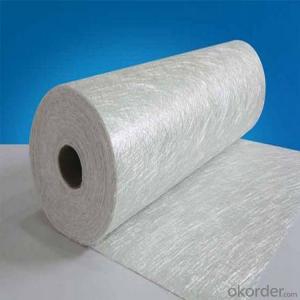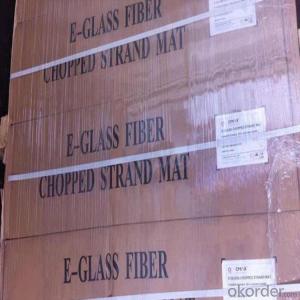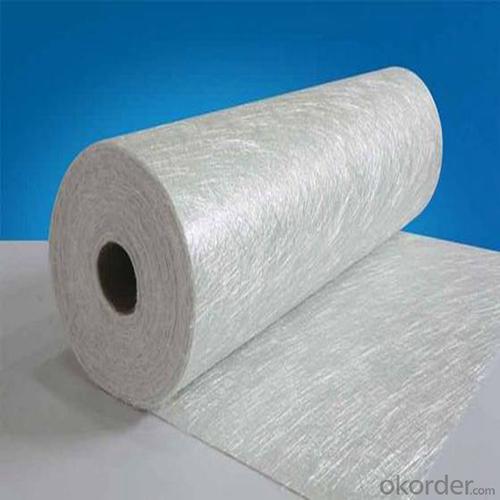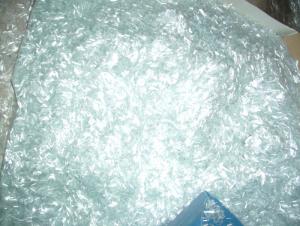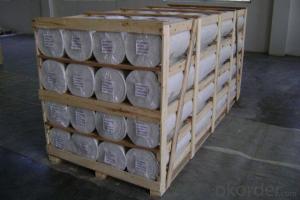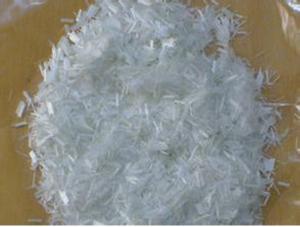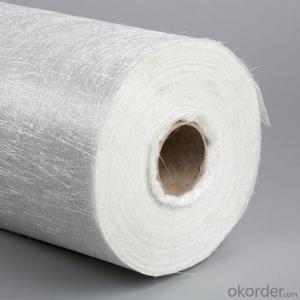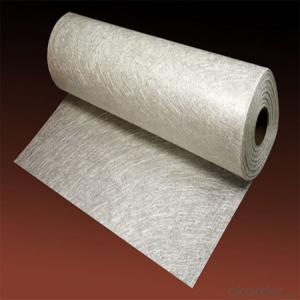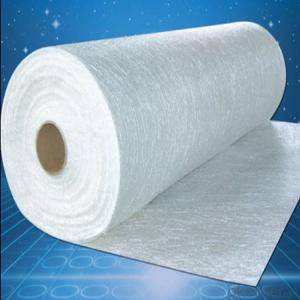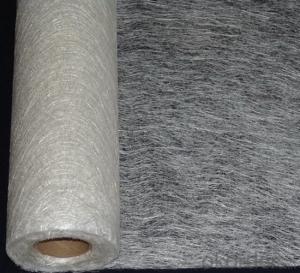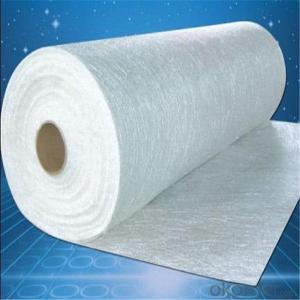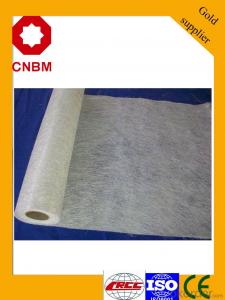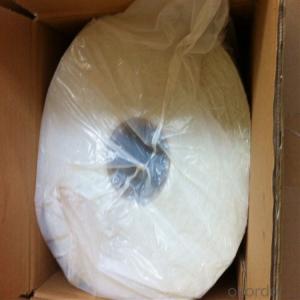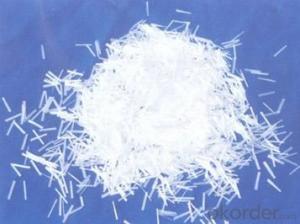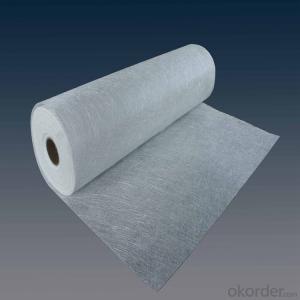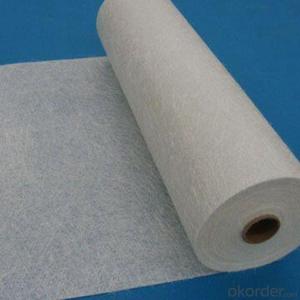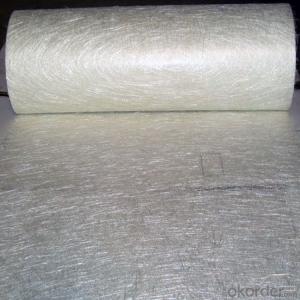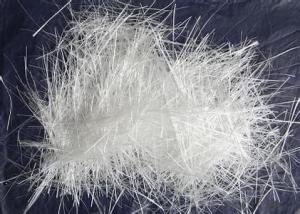Fiberglass Chopped Strand Mat 100g-900g/m2
- Loading Port:
- China main port
- Payment Terms:
- TT OR LC
- Min Order Qty:
- 1 kg
- Supply Capability:
- 10000 kg/month
OKorder Service Pledge
OKorder Financial Service
You Might Also Like
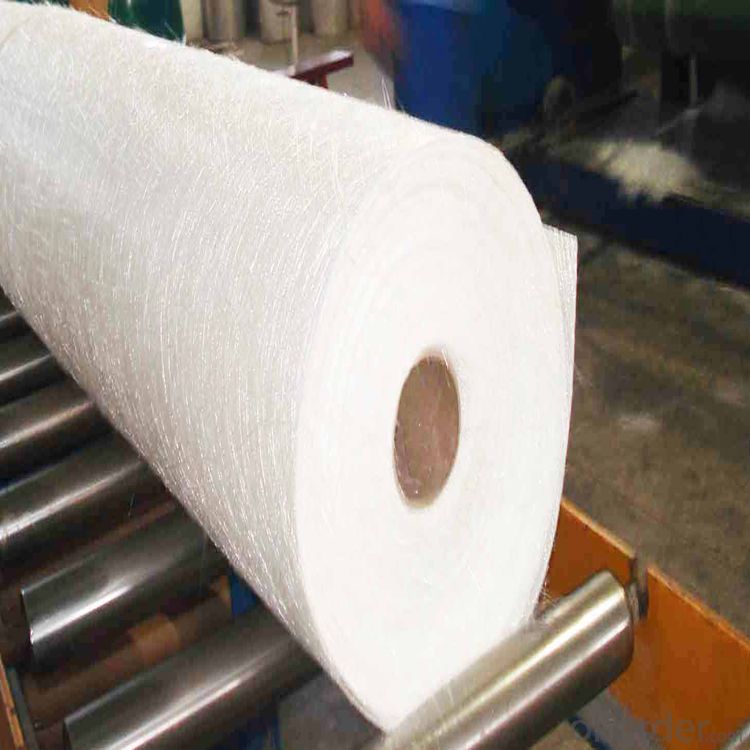
Product Description:
Chopped strand mat is made from chopped glass fibers, which are bonded with powder or emulsion binders. It can be used in hand lay-up process and continuous laminating process to produce FRP products, such as plates, lighting board, hull, bathtub, cooling towers, anti-corrosion materials, vehicles.
Features:
Uniform thickness, softness and hardness good.
Good compatibility with resin, easy completely wet-out.
Fast and consistent wet-out speed in resins and good manufacturability.
Good mechanical properties, easy cutting.
Good cover mold, suitable for modeling complex shapes.
Application:
fiberglass thickness is suitable for application by hand lay-up, reinforce and machine FRP molding,
including interior decoration of vehicles, boat hulls, complete set of sanitary equipment, anticorrosive pipes, tanks, building materials, tables, chairs, panels and all kind of composite FRP products.
Specifications:
Item | Over Density | Moisture Content | Chop Density | Polyester Yarn | Width |
(g/m2) | (%) | (g/m2) | (g/m2) | (mm) | |
EMK300 | 309.5 | ≤0.15 | 300 | 9.5 | 50-3300 |
EMK380 | 399 | 380 | 19 | ||
EMK450 | 459.5 | 450 | 9.5 | ||
EMK450 | 469 | 450 | 19 | ||
EMC0020 | 620.9 | 601.9 | 19 | ||
EMC0030 | 909.5 | 900 | 9.5 |
Special products are available according to customer’s requirement.
Product Packaging:
Each Surface Tissue is wound onto a paper tube which has an inside diameter of 76mm and the mat roll has a diameter of 330mm. The mat roll is wrapped up with plastic film,and then packed in a cardboard box or wrapped up with kraft paper. The rolls can be vertically or horizontally placed. For transportation, the rolls can be loaded into a cantainer directly or on pallets.
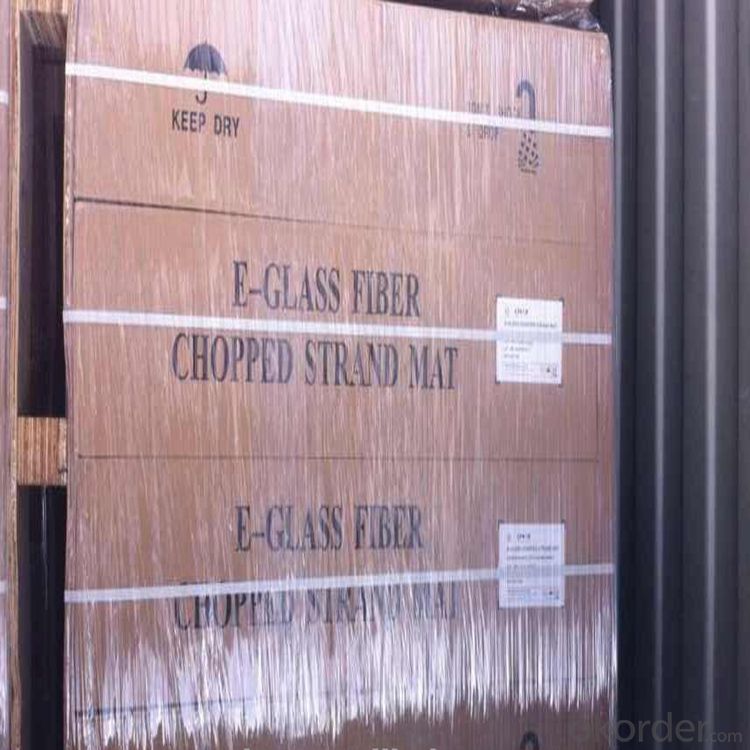
Product Storage:
Unless otherwise specified, Chopped Strand Mat should be stored in a dry, cool and rain-proof area. It is recommended that the room temperature and humidity should be always maintained at 15℃~35℃ and 50%~75% respectively.
Company Information
CNBM (China National Building Material) Group is the largest comprehensive building materials group in China that in integrate scientific research, manufacturing and logistics into one entity. The largest building materials and equipment specialists in China. Upon State Council approval, today CNBM owned more than 300 subordinate manufacturing factories and servicing companies. There are 6 fully owned public listed companies and 11 partially owned with substantial shares public listed companies. In many of these fields, CNBM is playing the leading role in the building industry in the country.
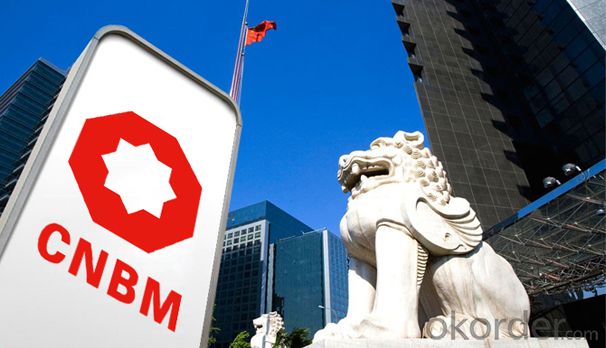
Order Information
Ordering please specify:
1. the product code, 2. weight, 3. width, 4. order quantity, 5. packaging, 6. special requirements please specify.
FAQ:
1. How long will you get reply?
Any inquiry will be replied within 24 hours. Usually we will reply within 12 hours.
2. How long is warranty period?
We provide 3 year warranty period.
3. What is your MOQ?
Any order quantity is available.
4. Can you provide sample?
Yes, samples are in stock. we can offer free sample for you.
5. Payment terms?
We can accept L/C, T/T, Western Union, Paypal etc.
6. Do you offer OEM service?
Yes, we can print customers’ logo on the packaging;
And the size and specification can be produced and design according to your demand.
7. What is the Production Lead Time?
15-20 days for bulk production after confirm the order.
- Q: Can fiberglass chopped strand be used in the production of wind turbine blades?
- Wind turbine blades can benefit from the use of fiberglass chopped strand. This material is commonly utilized in composite manufacturing and brings various advantages to blade production. To begin with, fiberglass chopped strand boasts exceptional tensile strength and stiffness, vital qualities for withstanding the forces and loads experienced by wind turbine blades during operation. By enhancing the blades' structural integrity, it increases their durability and resistance to fatigue. Moreover, fiberglass chopped strand exhibits excellent resistance to corrosion and environmental degradation. This is particularly important for wind turbine blades, which are exposed to diverse weather conditions and elements such as UV radiation, moisture, and temperature fluctuations. Incorporating fiberglass chopped strand into blade construction ensures long-term performance and reliability. Additionally, fiberglass chopped strand is lightweight, a significant benefit for wind turbine blades. The lighter the blades, the easier it becomes for the turbine to capture wind energy and rotate efficiently. Utilizing fiberglass chopped strand reduces the overall weight of the blades while preserving their strength and stiffness. In conclusion, fiberglass chopped strand proves to be a suitable material for wind turbine blade production due to its high tensile strength, corrosion resistance, and lightweight properties. Its utilization contributes to the overall performance, durability, and efficiency of wind turbines, making it the preferred choice in the industry.
- Q: How is fiberglass chopped strand used in the wind energy industry?
- Fiberglass chopped strand is extensively used in the wind energy industry for reinforcing composite materials used in manufacturing wind turbine blades. It is mixed with resin to create a strong and lightweight composite, providing the necessary structural integrity and stability required for the blades to withstand high wind speeds. The chopped strands enhance the overall strength and durability of the blade, ensuring optimal performance and longevity in generating clean and renewable energy from wind.
- Q: Does fiberglass chopped strand improve the stiffness of composite materials?
- Yes, fiberglass chopped strand does improve the stiffness of composite materials. Fiberglass chopped strands consist of small lengths of glass fibers that are randomly oriented and mixed with a resin matrix to form a composite material. These fibers provide reinforcement and enhance the mechanical properties of the composite. The stiffness of a composite material is determined by its ability to resist deformation under applied loads. By adding fiberglass chopped strand to the resin matrix, the composite material becomes stiffer due to the high modulus of elasticity of glass fibers. These fibers effectively distribute and transfer the applied loads throughout the matrix, increasing the overall stiffness of the composite. Furthermore, the random orientation of the chopped strands allows for multidirectional reinforcement, making the composite material more resistant to deformation in different directions. This improved stiffness makes fiberglass chopped strand an excellent choice for applications that require high strength and rigidity, such as automotive parts, aerospace components, and structural reinforcements. In summary, fiberglass chopped strand does enhance the stiffness of composite materials by providing reinforcement and improving load distribution. This leads to improved mechanical properties and makes it a valuable material for various industries and applications.
- Q: how long is the minimum length of the chopping glass fiber?
- 5mm, 12mm, 3mm, 9mm.5mm, 6mm, 41, 24mm, etc.
- Q: Is fiberglass chopped strand suitable for applications requiring high electrical insulation?
- No, fiberglass chopped strand is not suitable for applications requiring high electrical insulation. While fiberglass is a strong and versatile material, it is not known for its electrical insulation properties. Fiberglass chopped strand is typically used in applications where strength, resistance to corrosion, and thermal insulation are required, such as in automotive parts, boats, and construction materials. For applications requiring high electrical insulation, other materials like silicone rubber, polyethylene, or polypropylene would be more suitable choices. These materials have better dielectric properties and are specifically designed to provide excellent electrical insulation.
- Q: Can fiberglass chopped strand be used in composite materials?
- Yes, fiberglass chopped strand can be used in composite materials. Fiberglass chopped strand consists of small, randomly chopped fibers made from glass. These fibers are typically mixed with a resin to create a composite material. The chopped strands provide reinforcement to the composite, enhancing its strength and durability. The use of fiberglass chopped strand in composites is common in various industries, including automotive, aerospace, construction, and marine. It is an effective and cost-efficient way to add strength and stiffness to composite materials, making them suitable for a wide range of applications.
- Q: Does fiberglass chopped strand have any UV resistance?
- Yes, fiberglass chopped strand does have some level of UV resistance. However, it is important to note that the extent of this resistance can vary depending on the specific type and quality of the fiberglass material. While some fiberglass chopped strands are specifically designed to have enhanced UV resistance, others may require the application of a protective coating or finish to mitigate the effects of prolonged exposure to sunlight. UV resistance in fiberglass chopped strand is primarily achieved through the addition of various additives and coatings during the manufacturing process. These additives and coatings act as a barrier, preventing the harmful UV rays from penetrating the fiberglass material and causing degradation. It is worth mentioning that even with UV resistance, fiberglass chopped strand may still experience some level of discoloration, yellowing, or degradation over time when exposed to direct sunlight for extended periods. Therefore, it is generally recommended to minimize direct UV exposure and take appropriate protective measures, such as applying a UV-protective coating, when using fiberglass chopped strand in outdoor applications.
- Q: How does the fiber orientation affect the impact resistance of fiberglass chopped strand composites?
- The fiber orientation plays a crucial role in determining the impact resistance of fiberglass chopped strand composites. The orientation of the fibers within the composite affects how the energy from an impact is distributed and absorbed. When the fibers are randomly oriented, as in a chopped strand composite, the impact resistance is generally lower compared to composites with aligned fibers. This is because the random orientation leads to a less efficient load transfer and energy absorption mechanism. The impact force is distributed unevenly throughout the composite, resulting in localized stress concentrations and potential failure points. On the other hand, when the fibers are aligned, such as in a unidirectional composite, the impact resistance is significantly improved. The aligned fibers allow for a more efficient load transfer along the length of the fibers, spreading the impact force over a larger area and reducing stress concentrations. This results in enhanced energy absorption and better resistance to impact. Additionally, the orientation of the fibers also affects the failure mode of the composite under impact. In chopped strand composites, the random fiber orientation can lead to fiber pull-out and delamination, which are common failure mechanisms. Conversely, in composites with aligned fibers, fiber breakage and matrix cracking are more likely to occur, which can help dissipate energy and prevent catastrophic failure. In summary, the fiber orientation has a direct impact on the impact resistance of fiberglass chopped strand composites. Random fiber orientation leads to lower impact resistance, while aligned fibers result in improved impact resistance by providing efficient load transfer, reducing stress concentrations, and altering failure modes.
- Q: Is fiberglass chopped strand suitable for marine structural applications?
- Yes, fiberglass chopped strand is suitable for marine structural applications. It is a durable and corrosion-resistant material that can withstand the harsh marine environment, making it ideal for use in boat hulls, decks, and other structural components. Its high strength-to-weight ratio and excellent impact resistance also make it a popular choice in the marine industry.
- Q: How does the fiber alignment distribution of fiberglass chopped strand affect the properties of composites?
- The overall properties of composites are heavily influenced by the distribution of fiber alignment in fiberglass chopped strands. The mechanical strength, stiffness, and other performance characteristics of the composite material are significantly affected by the arrangement of fibers within the matrix. Reinforcement is provided by the fibers in composites, while the matrix holds the fibers together and facilitates load transfer between them. The alignment distribution of the fibers plays a crucial role in determining the efficiency of load transfer and the overall integrity of the composite structure. When the fibers are evenly distributed and aligned parallel to the applied load, the composite exhibits improved strength and stiffness. This alignment allows for efficient load transfer along the fibers, resulting in enhanced mechanical properties. The composite becomes stronger and more rigid, making it suitable for applications requiring high strength and dimensional stability. Conversely, if the distribution of fiber alignment is random or uneven, the properties of the composite may be compromised. Randomly oriented fibers can create weak points within the material, leading to reduced strength and stiffness. This can result in lower load-bearing capacity and increased vulnerability to deformation or failure. Moreover, the fiber alignment distribution also impacts other important properties of composites, such as impact resistance, fatigue resistance, and thermal conductivity. A well-aligned distribution of fibers aids in the absorption and dissipation of impact energy, making the composite more resistant to sudden impacts. It also enhances the material's fatigue performance, as the load is evenly distributed among the fibers, reducing the likelihood of fatigue crack initiation and propagation. Additionally, the fiber alignment distribution affects the thermal conductivity of composites. When the fibers are aligned, heat can be transferred more efficiently along the fibers, leading to improved thermal conductivity. This property is particularly crucial in applications where heat dissipation is vital, such as electronic devices or aerospace components. To summarize, the fiber alignment distribution of fiberglass chopped strand has a significant impact on the properties of composites. A well-aligned distribution enhances the mechanical strength, stiffness, impact resistance, fatigue resistance, and thermal conductivity of composites. Therefore, it is essential to carefully consider and control the fiber alignment distribution in the manufacturing of high-performance composite materials.
Send your message to us
Fiberglass Chopped Strand Mat 100g-900g/m2
- Loading Port:
- China main port
- Payment Terms:
- TT OR LC
- Min Order Qty:
- 1 kg
- Supply Capability:
- 10000 kg/month
OKorder Service Pledge
OKorder Financial Service
Similar products
Hot products
Hot Searches
Related keywords
